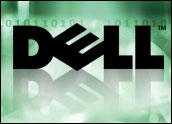
SAP’s recent Sapphire NOW user and partner conference in Orlando was a love fest for the company’s HANA in-memory database technology. SAP has made it quite clear that HANA is far more than an innovative solution for Big Data, analytics and business intelligence workloads.
In fact, HANA and complementary SAP solutions, including the new cloud-based PaaS and subscription offerings announced in March and April, represent the future for the company and its customers and partners.
That’s a serious commitment by any measure, so my interest was piqued by an element in one of the Sapphire NOW announcements: that SAP and IBM have begun a testing and evaluation program for HANA running on IBM’s POWER7+ and POWER8 systems, allowing select clients to deploy HANA solutions in Power/Suse Linux-based environments.
Why did this grab me? Because until now, HANA deployments have all been in Intel x86-based systems and appliances.
In fact, the list of hardware vendors supporting HANA reads like a who’s who of Intel systems players. Moreover, this clear focus on x86 has set SAP apart in the increasingly competitive and contentious Big Data market.
Other in-memory platforms consist largely or entirely of a single vendor’s proprietary technologies, including Oracle’s Exalytics and IBM’s Blu Acceleration. In contrast, SAP opens HANA to virtually any vendor that can meet the company’s stringent certification process, significantly expanding the pool of players entering and competing in Big Data market opportunities.
Why ‘Empower’ HANA?
So why would SAP and IBM cooperate on certifying HANA for Power Systems? Mainly for simple go-to-market reasons. Big Data certainly garners more than its share of attention and hype, but demand for solutions is still in early days beyond well-funded enterprises and analytics/BI specialists.
As SAP continues to develop the market for HANA, it behooves the company to pursue any and all serious partnerships, which certainly includes IBM.
Similarly, IBM is exploring a variety of new opportunities for Power Systems and its new POWER8 microprocessors, partly as a matter of self-preservation. Depending on whose data you read, IBM owns near or over half of the market for traditional Unix systems. That’s the good news. But given the continuing implosion of Unix sales (contracting at roughly 10 percent per year), finding new customers is absolutely critical.
That’s part of the genesis of the OpenPOWER Foundation, launched in 2013 by IBM and partners — including Google, Nvidia and Tyan — and that has grown to more than 30 members since then. The new HANA/Power T&E program fully complements and should significantly extend the OpenPOWER effort.
Finally, IBM and SAP have a long history of friendly, innovative collaboration. Both focus largely on global enterprises and industries, and the pair share numerous common customers. They also have worked together on notable new solutions, including HANA.
In fact, IBM’s System x has long been the reference architecture for SAP HANA, partly because IBM’s X-Architecture technologies can support significantly greater memory capacity — up to 3X more in the latest X6 generation — and better performance than competitors’ solutions.
This brings up a related practical point: Without the new T&E program, IBM’s planned sale of its System x organization to Lenovo will leave the company without a native solution for HANA. If SAP is successful in persuading customers to standardize its applications on the HANA platforms, IBM essentially would be locked out from participating — not an appetizing turn of events.
Final Analysis
The new T&E program should go a long way toward demonstrating the kind of benefits customers can expect from integrated SAP/IBM solutions. If Power Systems deliver the kind of HANA performance that IBM has suggested, the news should be very good for the company.
However, it also will inject more choice and competition into the in-memory analytics/Big Data market — eventually resulting in significant price/performance benefits attractive to both existing customers and new clientele.
The effort could help to validate analytics as a lingua franca for next-generation IT; an implicit point in the efforts of many Big Data-focused vendors and promoters. The fact is, as data and data sources continue to accumulate and accelerate, it will be increasingly difficult for organizations to realize the full benefits of their information assets and investments.
Both SAP’s and IBM’s strategies around HANA emphasize how a unified in-memory platform can deliver the goods in both analytics and common line-of-business applications. That’s all to the good — but just as important will be the increasing competition that viable Power-based HANA solutions should inspire in the marketplace. Analytics and Big Data belong everywhere, not just in enterprise or BI ivory towers. If the SAP-IBM HANA-on-Power Systems effort succeeds, the two companies could go a long way toward achieving just that.






















































Thanks for sharing and any new updates from sap new module?